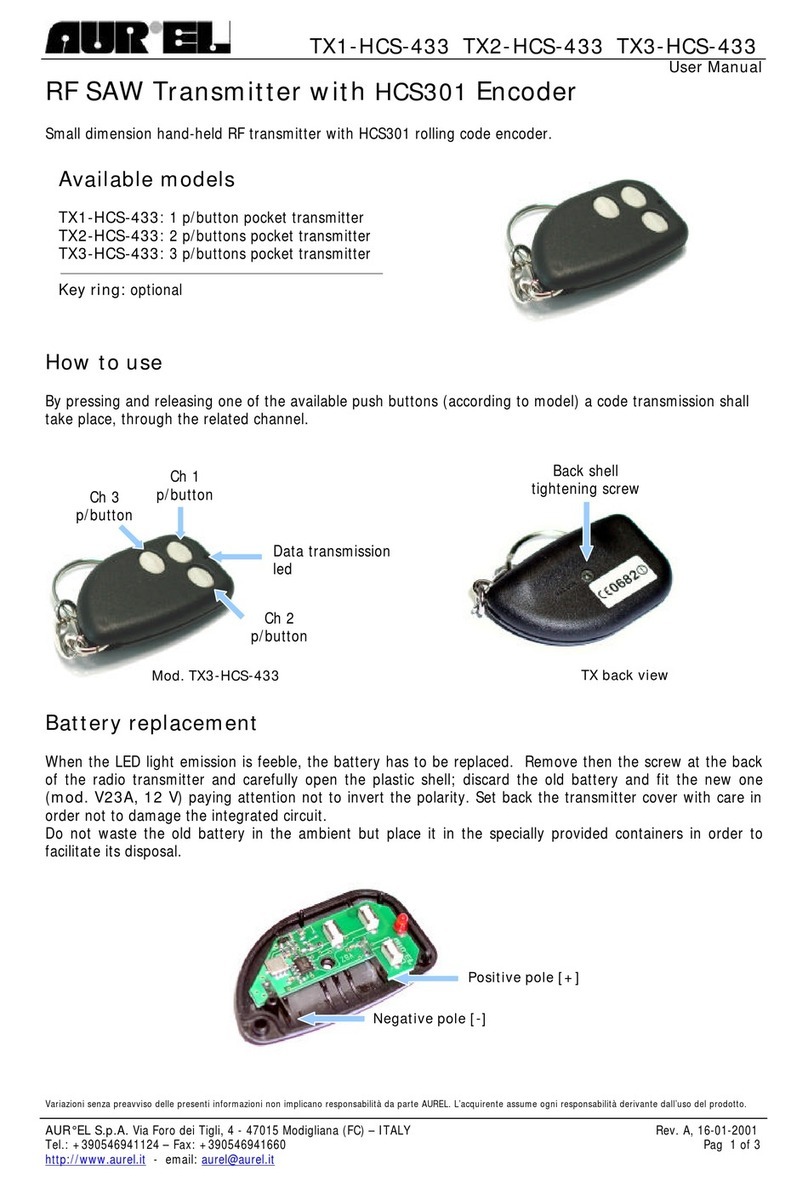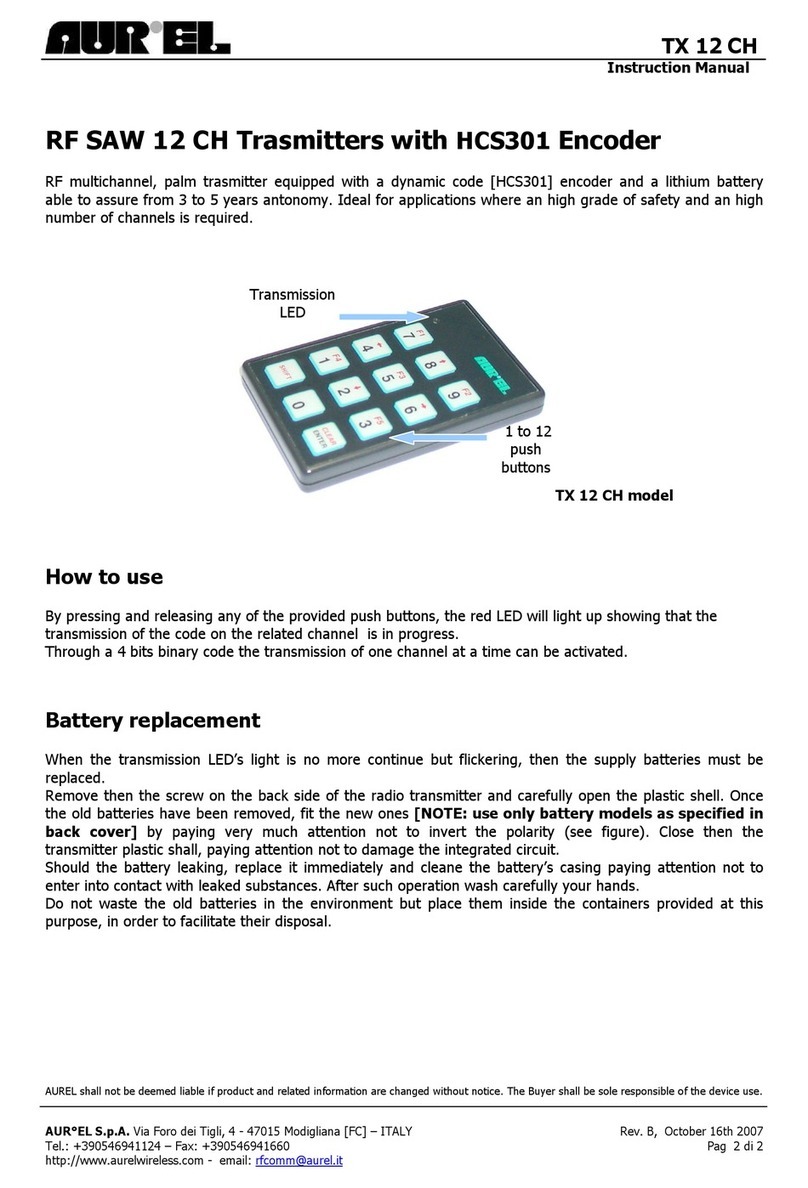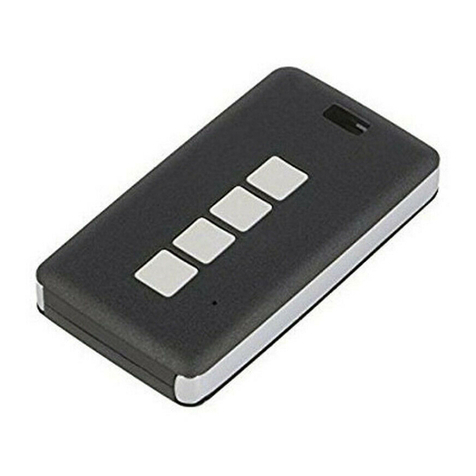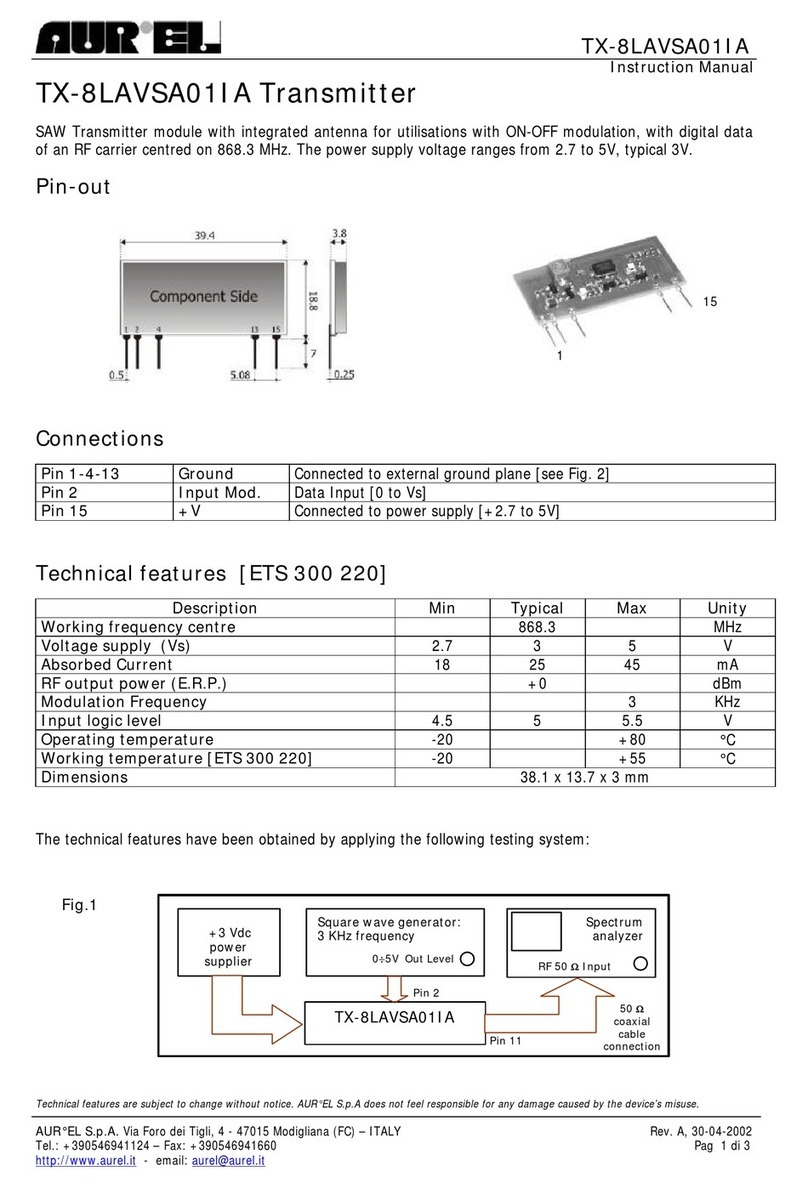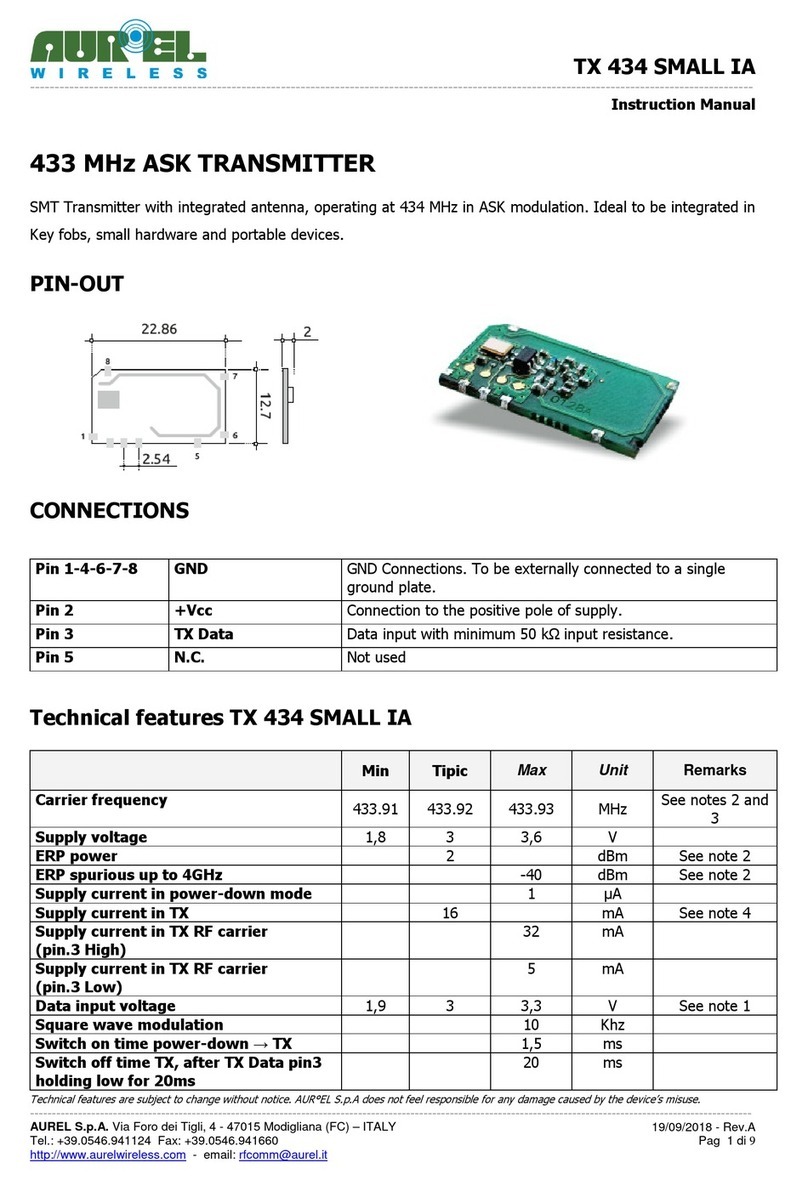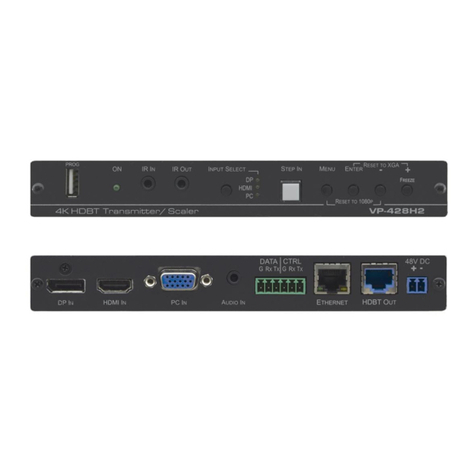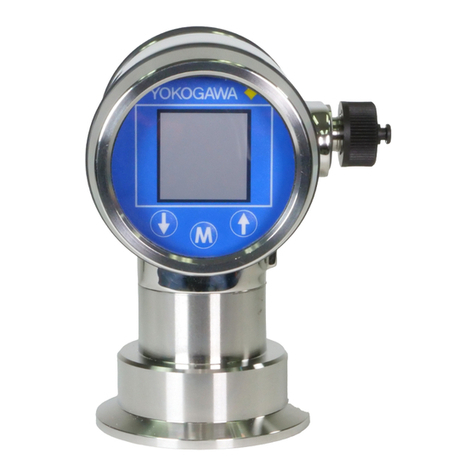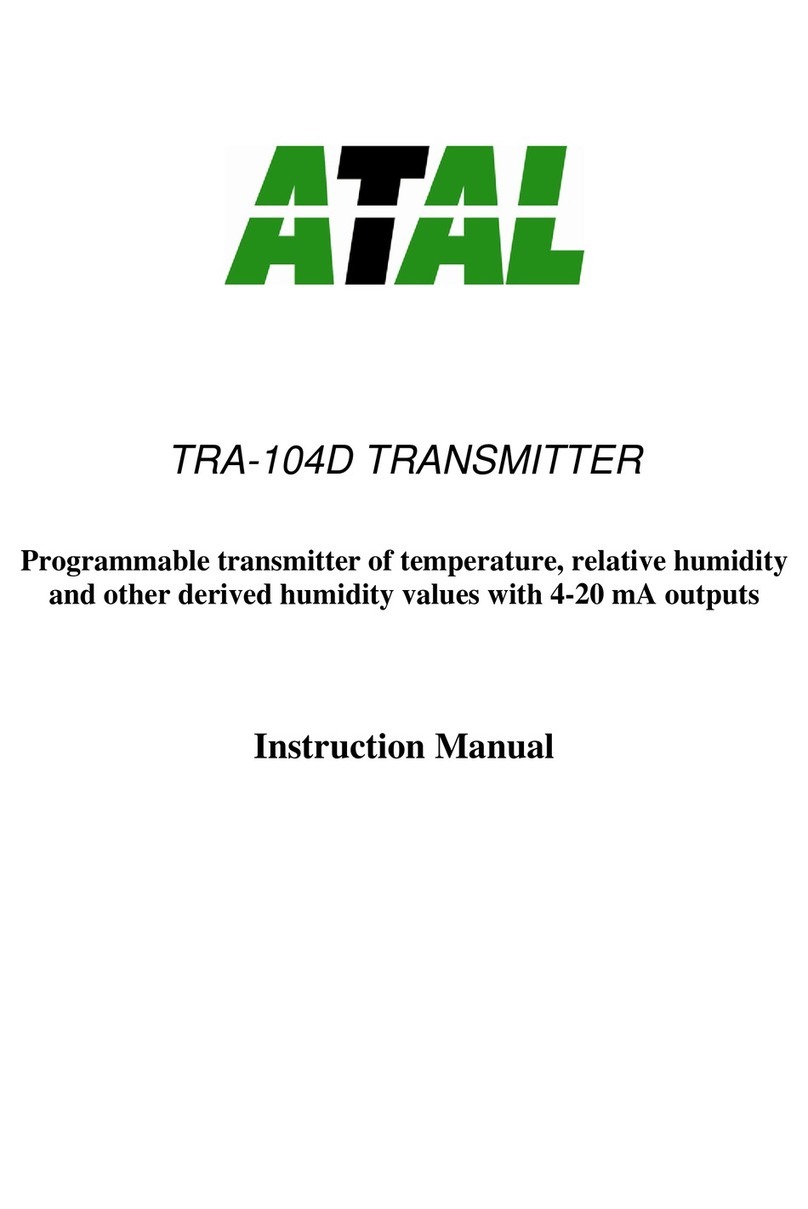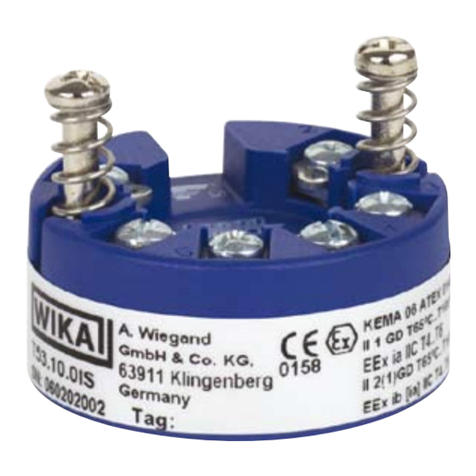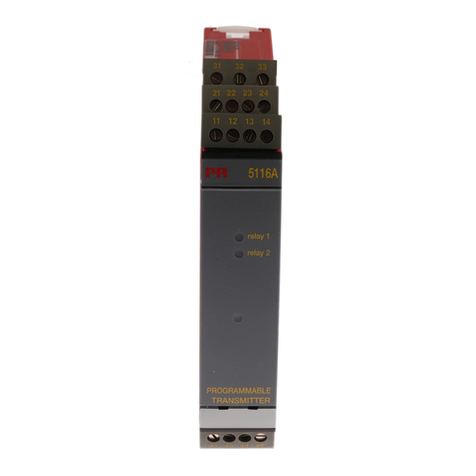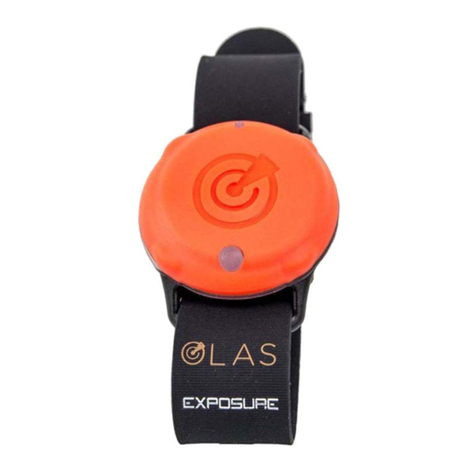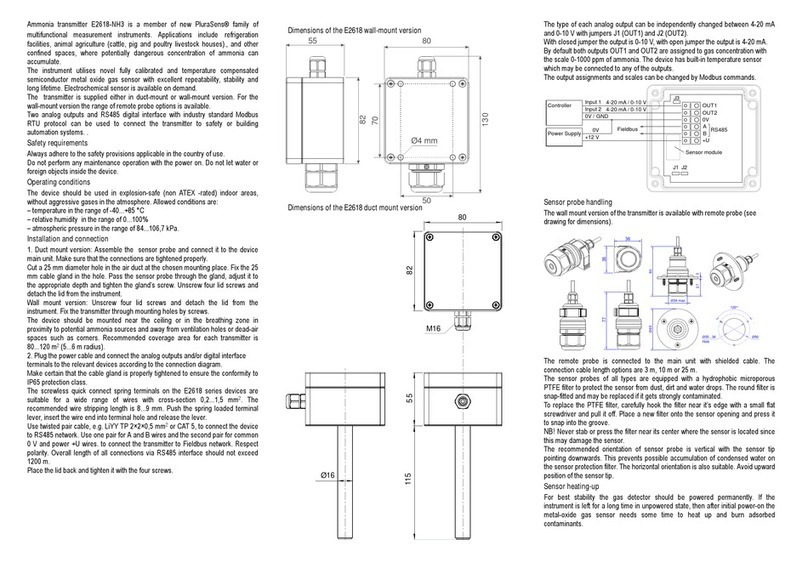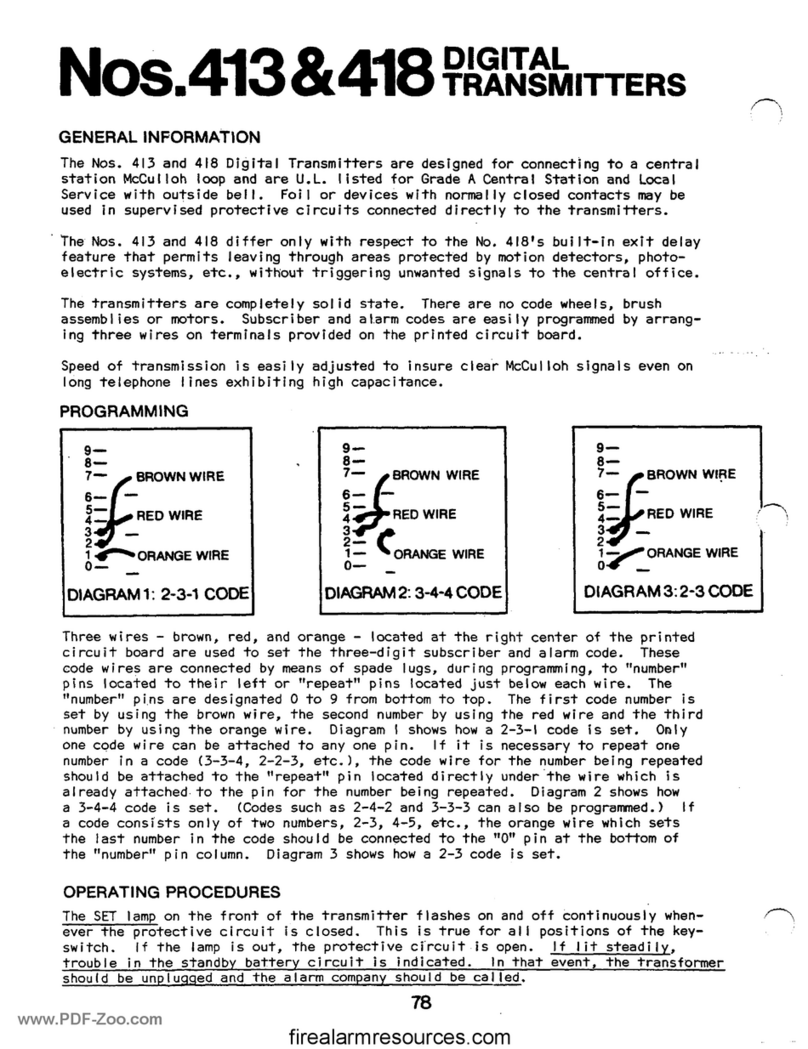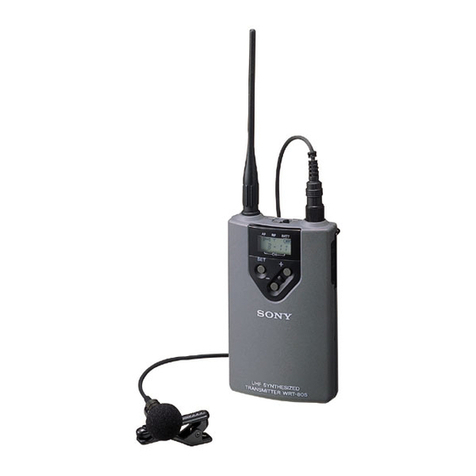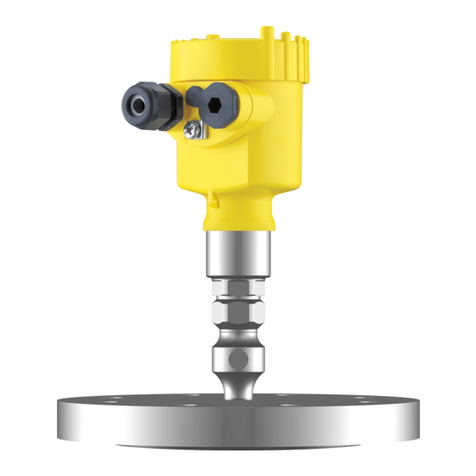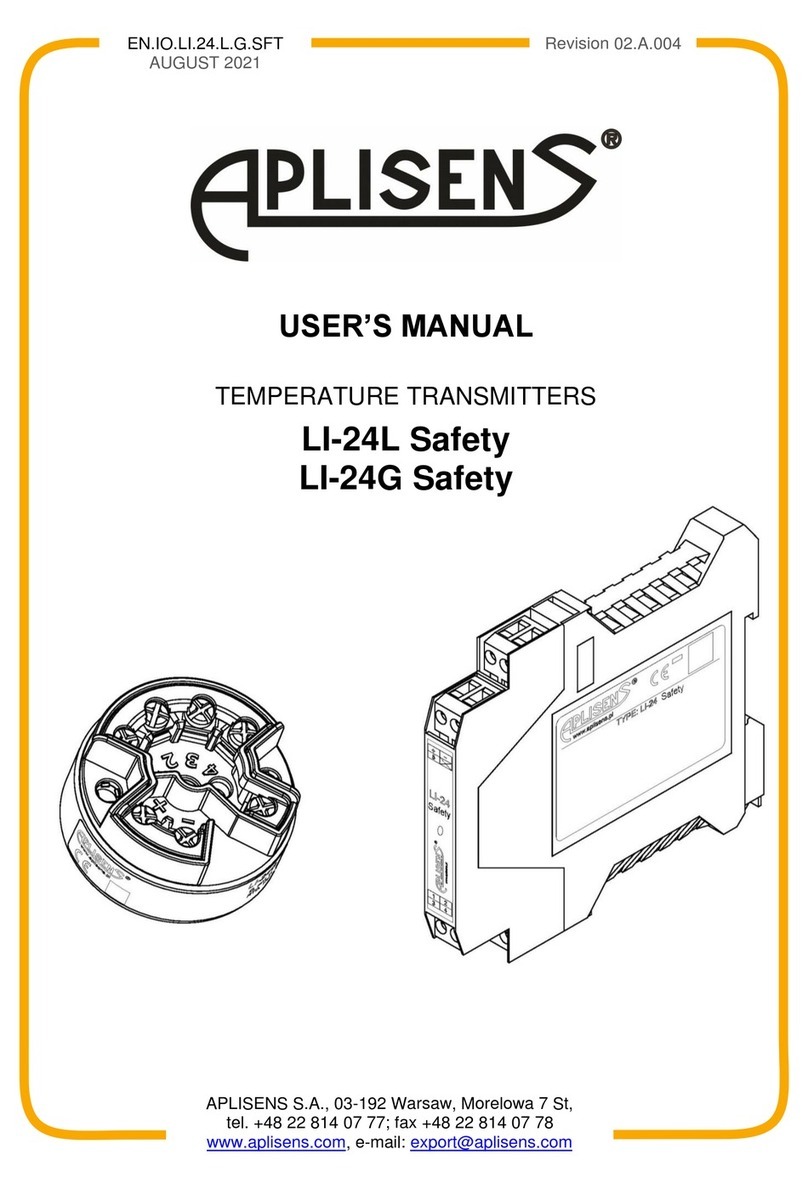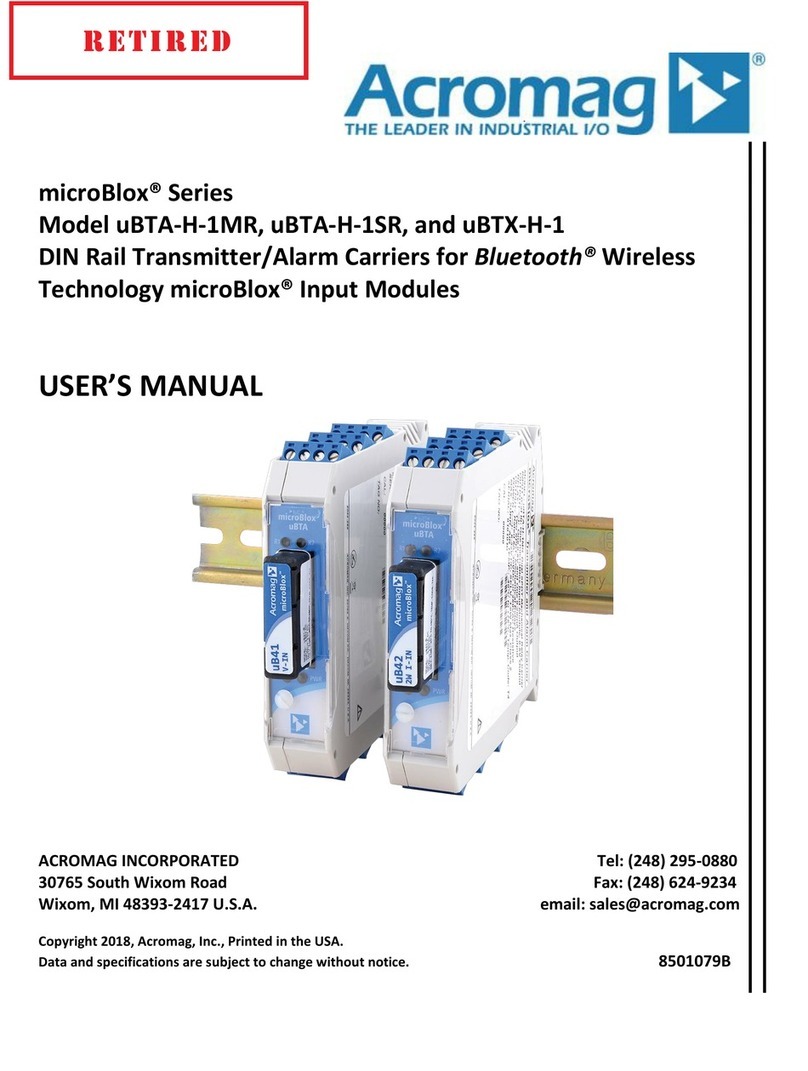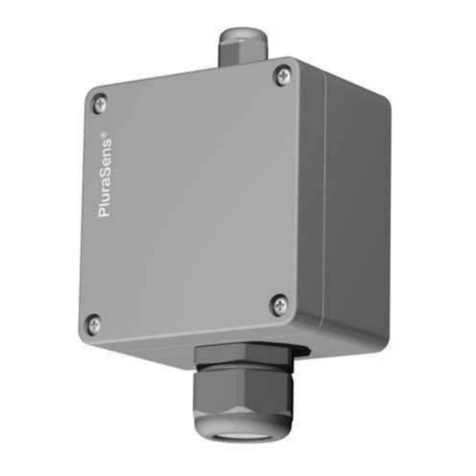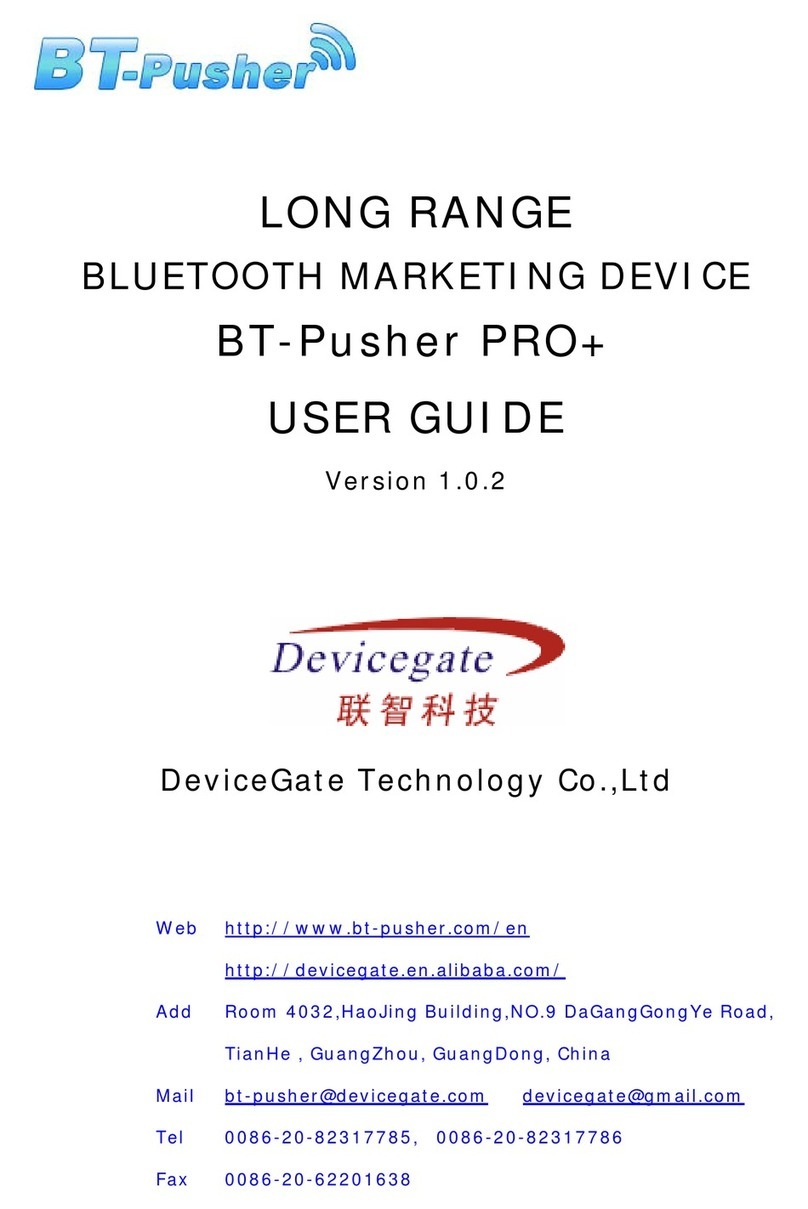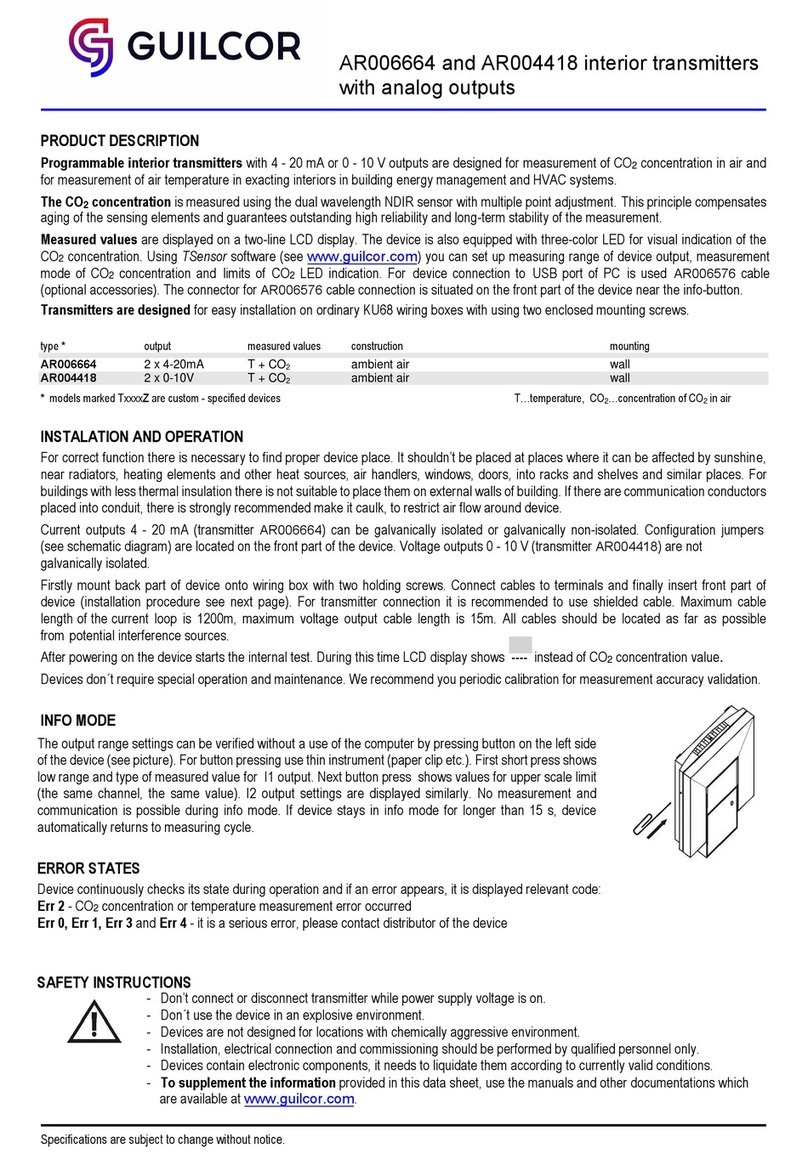AUREL TX-8LAVSA05 User manual

TX-8LAVSA05
Instruction Manual
Technical features are subject to change without notice. AUR°EL S.p.A does not feel responsible for any damage caused by the de ice’s misuse.
AUR°EL S.p.A. Via Foro dei Tigli, 4 - 47015 Modigliana (FC) – ITALY Re . B, 05-03-2010
Tel.: +390546941124 – Fax: +390546941660 Pag 1 di 3
http://www.aurel.it - email: aurel@aurel.it
TX-8LAVSA05 Transmitter
SAW Transmitter module with external antenna, for applications with ON-OFF modulation, with the digital
data of an RF carrier centred on 868.3 MHz. The power supply oltage ranges from 2.7 to 5V, typical 3V.
in-out
Connections
in 1-4-13 Ground Connected to external ground plane [see Fig. 2]
in 2 Input Mod. Data Input [0 to Vs]
in 11 RF Output RF Output with 50 Ohm typical impedance
in 15 +V Connection to the positi e pole of supply [+2.7 to 5V]
Technical features [ETS 300 220]
Description Min Typical Max Unity
Working frequency centre 868.3 MHz
Voltage supply (Vs) 2.7 3 5 V
Absorbed Current 20 25 50 mA
RF output power (E.R. .) +4 +5 +7 dBm
Output impedance pin 11 50 Ω
Modulation Frequency 3 KHz
Input logic level 0 Vs V
Operating temperature -20 +80 °C
Working temperature [ETS 300 220] -20 +55 °C
Dimensions 38.1 x 13.7 x 3 mm
The technical features ha e been obtained by applying the following testing system:
1
15
Fig.1
TX
-
8LAVSA05
+3V dc
ower
supplier
Spectrum
analyzer
Square wave generator:
3 KHz frequency
0
÷
÷÷
÷
5V Out Level
RF 50 Ω Input
in 2
in 11
50 Ω
ΩΩ
Ω coaxial
cable
connection

TX-8LAVSA05
Instruction Manual
Technical features are subject to change without notice. AUR°EL S.p.A does not feel responsible for any damage caused by the de ice’s misure.
AUR°EL S.p.A. Via Foro dei Tigli, 4 - 47015 Modigliana (FC) – ITALY Re . B, 05-03-2010
Tel.: +390546941124 – Fax: +390546941660 Pag 2 di 3
http://www.aurel.it - email: aurel@aurel.it
Device usage
In order to obtain the performances described in the technical specifications and to comply with the
operating conditions, which characterize the Certification, the transmitter has to be mounted on a printed
circuit, and keep into consideration what follows:
3V dc supply
1. The transmitter must be supplied by a ery low oltage source, safely protected against short circuits.
2. Maximum oltage ariations allowed: ± 0,25 V.
3.
De-coupling, next to the transmitter, by means of a minimum 100.000 pF ceramic capacitor.
Ground
1. It must surround at the best the welded area of the transmitter. The circuit must be double layer, with
throughout ias to the ground planes, approximately each 15 mm.
2.
It must be properly dimensioned, especially in the antenna connection area, in case a radiating whip
antenna is fitted in it (an area of approximately 50 mm radius is suggested).
50 Ohm line
1. It must be the shortest as possible.
2. 1,8 mm wide for 1 mm thick FR4 printed circuits and 2,9 mm wide for 1,6 mm thick FR4 printed circuits.
It must be kept 2 mm away from the ground circuit on the same side.
3.
On the opposite side a ground circuit area must be present.
Antenna connection
1. It may be utilized as the direct connection point for the radiating whip antenna.
2. It can bear the connection of the central wire of a 50 Ω coaxial cable. Be sure that the braid is welded to
the ground in a close point.
Fig. 2

TX-8LAVSA05
Instruction Manual
Technical features are subject to change without notice. AUR°EL S.p.A does not feel responsible for any damage caused by the de ice’s misure.
AUR°EL S.p.A. Via Foro dei Tigli, 4 - 47015 Modigliana (FC) – ITALY Re . B, 05-03-2010
Tel.: +390546941124 – Fax: +390546941660 Pag 3 di 3
http://www.aurel.it - email: aurel@aurel.it
Antenna
1. A whip antenna, 8.5 cm long and approximately 1 mm dia, brass or copper wire made, must be
connected to the RF output of the transmitter (pin 11), (see fig. 2).
2. The antenna body must be keep straight as much as possible and it must be free from other circuits or
metal parts (5 cm minimum suggested distance.)
3.
It can be utilized either ertically or horizontally, pro ided that a good ground plane surrounds the
connection point between antenna and transmitter output.
N.B:
As an alternati e to the a.m. antenna it is possible to fit the whip model manufactured by
AUR°EL (see related Data Sheet and Application Notes).
By fitting whips too different from the described ones, the EEC Certification is not assured.
Other components
1. Keep the transmitter separate from all other components of the circuit (more than 5 mm).
2. Keep particularly far away and shielded all microprocessors and their clock circuits.
3. Do not fit components around the 50 Ohm line. Keep them at least at 5 mm distance.
4.
If the Antenna Connection is directly used for a radiating whip connection, keep at least 5 cm radius free
area. In case a 50 Ω impedance coaxial cable is connected, then 5 mm radius will suffice.
Reference Rules
The TX-8LAVSA5 transmitter complies with the EU Rules ETS 300-220, with a 5V max. supply. The
equipment has been tested according to rule EN 60950 and it can be utilized inside a special insulated
housing that assures its compliance with the abo e mentioned rule. The transmitter must be supplied by a
ery low oltage source, safely protected against short circuits.
The use of the transmitter module is foreseen inside housings that assure the o ercoming of the rules EN
61000 not directly applicable to the module itself. In particular, it is left at the User’s care, the insulation of
the external antenna connection, and of the antenna itself, since the RF output of the transmitter is not built
to directly bear the electrostatic charges foreseen by the EN 61000-4-2 rules.
CE T 70-03 Recommendation
In order to comply with such rule, the de ice must be used only for a 10% of an hourly duty-cycle, (that
means 6 minutes of utilisation o er 60). The de ice utilisation inside the italian territory is go erned by the
Codice Postale
and
Telecomunicazioni
rules in force (art. no. 334 and subsequents).
Other AUREL Transmitter manuals

